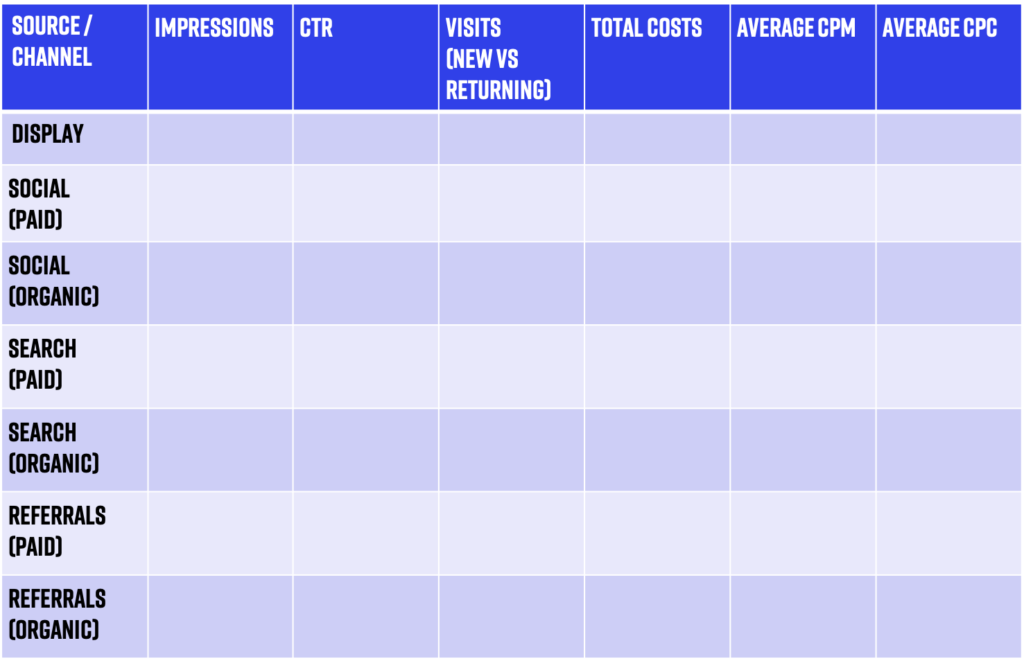This post is the latest in our series on B2B marketing optimization and how to take your marketing efforts to the next level.
Earlier on the ON24 blog, we’ve explored why optimization in B2B marketing is important, what are the common barriers to optimization and why you should benchmark your own performance.
We also covered why optimization should be done across the entire customer journey. The first step in that journey is acquisition.
Many marketers might see acquisition as the point at which a visitor becomes a known prospect. But if you aren’t reaching them in the first place with your demand generation marketing, turning them into a known (and cookied) prospect is impossible.
This post will explore some steps you can take to get a high-level view on how well you are currently doing in reaching your target customers and accounts so you can take steps to optimize your efforts for reach.
Clearly define your target customer
While you can simply optimize reach in terms of ‘more impressions’ or ‘more website visitors,’ what you really need is ‘more impressions from potential customers’ or ‘more website visitors from potential customers.’
Of course, the nature of impressions and visitors is that they are largely anonymous at the earliest stages of the customer journey. However, by taking such a lens at the start, you can keep your reach optimization within the bounds of those who could become your customers.
Take the information from your target customer profiles that you use in your marketing planning. Job titles, industries, headcount, geographies, technologies used – all of these can help when figuring out how to optimize your campaigns. Target account lists can also be helpful.
From a campaign perspective, examine that you have a clear idea on what your target prospects are researching. As covered in ON24’s scrappy marketing series, external and internal data sources can be valuable and ensure your view on their needs aligns with what the data demonstrates.
Get a clear picture on your first-party data and who you know already
To a large extent, the prospects and customers you already have in your database are those who will have already been reached. Your job now is to help convert them or, if they are customers already, to retain and engage them.
Make sure to remove these contacts from the equation if you are optimizing for reach. At the earliest stages (i.e. before they MQL), there may be no need, but if you are paying to send early-stage messages to your existing clients, you’ll waste money and potentially damaging your customer experience.
Organizing who you alreadu know against who you don’t is also an opportune time to see when your last data cleansing efforts have taken place. Doing so allows you to get a more accurate view of whether these contacts can already be considered ‘reached’ or if they actually need to be removed.
Assess your current reach across each of your channels
The next stage of optimizing for reach is to bring together the data on each of your channels to get a view on how well they are performing against each other and a variety of metrics. Such an effort might look like the table below, which may already be in your standard reports.

This will help you get a fast view on:
- Where are we driving the most impressions?
- Where are we most efficient at driving impressions?
- What is actually driving clicks and visits? And at what cost?
You’ll likely want to dig further into each channel to look at the individual campaigns you are running, but this high-level view will help you to start exploring where you might focus your optimization efforts.
On the other side of the coin, there may be areas where you simply can’t collect the data. For example, if you work with a referral partner that only sends traffic to your landing pages, you might never know the impression count. By its nature, direct traffic doesn’t have impressions as this represents visitors coming directly to your site.
Likewise, it might be difficult to accurately estimate the costs of organic or “free” impressions and visits – but do try to work out a figure based on employee time or agency rates where possible.
If you are using an account-based marketing tool, there may be views within your current platform helpful for assessing your reach for particular target accounts across different channels.
Also, look to segment out these figures between new and returning visitors, along with known and unknown contacts.
Identify what areas you might wish to optimize
Once you have this high-level view, you can start to identify possible areas worth prioritizing for your optimization efforts.
Compare your own performance against sources of benchmark data that you can find. For example, are you paying way more than average for your impressions? Is your clickthrough rate sub-par? Is your reach through organic channels below where you would like it to be? Have there been any significant changes over time? Are you paying unnecessarily for visits for known prospects or customers? From an account-based marketing perspective, are there some channels that aren’t getting through?
From this information, choose what areas you will focus on for your first optimization steps.
Also, always keep conversion in mind. You don’t want to optimize for visitors that will simply arrive and bounce, never to be seen again.
Set a goal to optimize against – and consider deduping against known contacts
With your optimization priorities in hand, you can now set a goal for your reach optimization efforts. Make sure that any goal is SMART – that is, specific, measurable, achievable, realistic and time-bound.
And as you run your campaigns, consider adding any existing contacts to an exclusion list for your paid efforts. This will help you save money, focus on reaching new prospects, and keep the customer experience high.
If you’re taking an account-based approach to reach your targets, make sure to download The B2B Marketer’s Guide to Account-Based Marketing.
